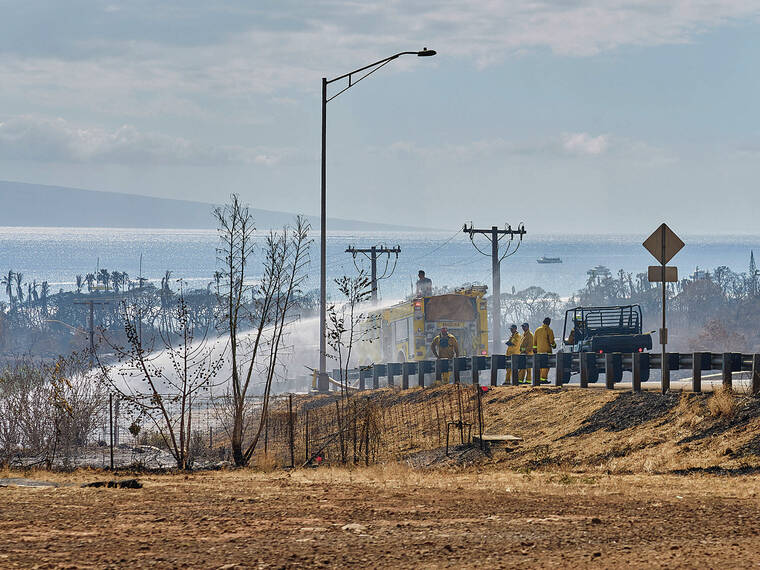Kilauea continues to erupt, vog returns to west side of Hawaii island


USGS PHOTO BY M. PATICK
A Hawaiian Volcano Observatory geologist collects a sample lave from the current eruption on Monday morning. The eruption is occurring in the east portion of Halemaumau crater and on the downdropped block to the east, which formed during the 2018 summit collapse. USGS said a safe location was identified on the downdropped block, from which the geologist could collect a molten sample of newly erupted material. The sample will provide information on magma storage and transport before it erupted onto the surface as lava.


As the eruption of Kilauea continued for a second day, vog conditions returned to the west side of Hawaii island.
The state Department of Health today reported that air quality levels were elevated at its Ocean View and Pahala air quality monitoring stations.
Hawaii Volcano Observatory scientists said lava fountains have decreased in height since the eruption started Sunday afternoon, but they still reached up 50 feet this morning.
The active fountains stretched for nearly a mile in the eastern portion of the crater floor and on the downdropped block within Kilauea’s summit caldera.
Volcanic particulates in the air and levels of sulfur dioxide were expected to increase and fluctuate in various areas of the Big Island, causing poor air quality, officials said.
Volcanic gases can be dangerous, especially for people with heart or respiratory problems, infants, young children and pregnant women, they said.
Don't miss out on what's happening!
Stay in touch with breaking news, as it happens, conveniently in your email inbox. It's FREE!
Meanwhile, Hawaiian Volcanoes National Park closed the Keanakakoʻi viewing area due to high concentrations of sulfur dioxide and particulates until further notice. HVO scientists have measured sulfur dioxide emission rates of up to 100,000 tons.
Park officials said the best viewing of the lava lake and fountains can be found at Uekahuna, Kilauea Overlook and areas along Crater Rim Trail, though conditions can change at any time.
“Stay on marked trails and overlooks. Do not enter closed areas. Avoid cliff edges and earth cracks, they are unstable,” the park said in a news release. “Slow down and drive safely. Expect long waits for parking spaces at popular vantage points like Kilauea Overlook.”
As for the air quality, health officials recommended reducing outdoor activities that cause heavy breathing.
“This is especially important for sensitive groups, such as children, the elderly, and individuals with pre-existing respiratory conditions including asthma, bronchitis, emphysema, and chronic lung and heart disease,” they said in a news release.
Other recommended precautionary measures included:
>>People with asthma or other chronic respiratory disease should always have medications available. Daily prescribed medications should be taken on schedule.
>>People experiencing health effects should contact their medical provider as soon as possible if any symptoms develop, as respiratory conditions might worsen rapidly in heavy sulfur dioxide or vog conditions.
>>Stay indoors and close windows and doors. If an air conditioner is used, set it to recirculate. If you need to move out of an impacted area, turn on the car’s air conditioner and set it to recirculate.
>>Face masks (surgical, cloth, KF94, KN95, N95) do not provide protection from sulfur dioxide or vog. However, they can be effective in outdoor environments in reducing inhaled hazardous particulates associated with falling ash and Pele’s hair.
>>Drink plenty of fluids to avoid dehydration.




